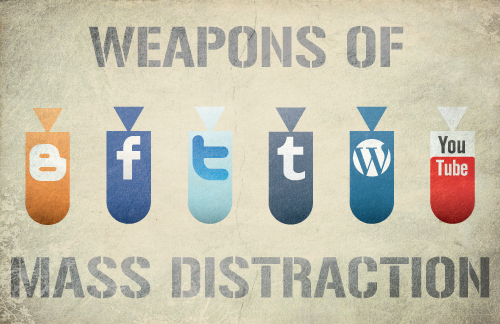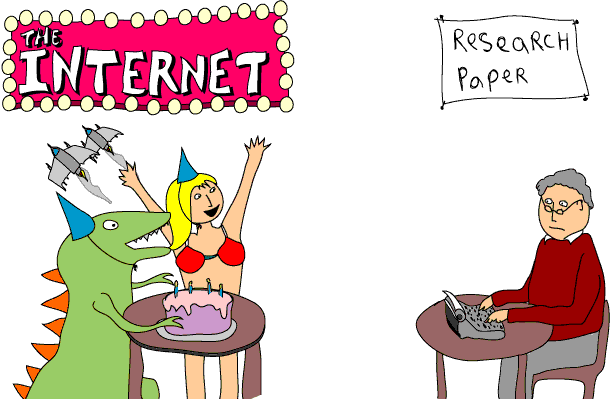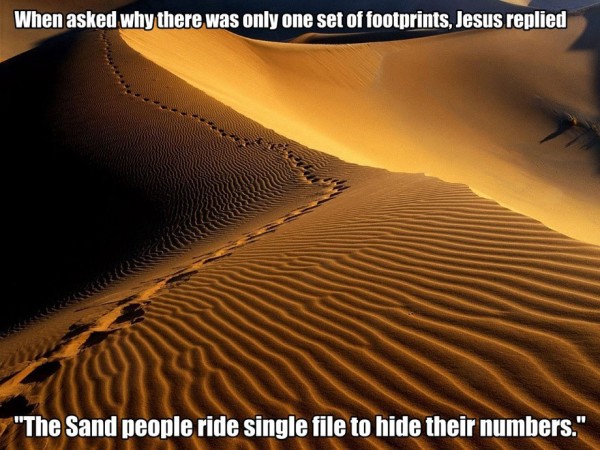One of the TED books from last year was "Is the Internet changing the way you think ?" which was published by Edge and edited by John Brockman. The idea sprung from a desire to gather the world's 100 smartest persons and make them ask questions to each other in order to make intellectual progress (The World Question Center). With time, this became a group of smart / thoughtful people (Edge) to whom a single important question is asked each year. Their answers are published in a book. The three first texts of last year's book are written by Clay Shirky, Nicholas Carr and Richard Dawkins and all mention the distracting nature of the Web. It's true. Look at how many tabs are open in your browser right now, think about how you got to this text and see if you'll read it till the end with no interruption (unlikely). I believe, and would like to show in the following article, that someone, might be leveraging that aspect of the Web however.
In a (very old) article, The Economist pointed out that three things were convincing fashion lovers, once thought to be the ultimate physical shop-goers (because of their need to feel the material and try clothes on), to finally shop online :
- Excellent service
- Highest quality
- Cutting-edge selection
These three things, Net-a-porter.com, The Economist's main example, offers. And it is probably why it has succeeded this far:
- Excellent service is a function of the website's design : User interface, price/product filtering and selection, basket visibility, final price break-down and transparency, delivery cost
- Highest quality depends on the e-tailer's market strategy : Net-a-porter sells designer apparel such as Jimmy Choo, Channel ...
- Cutting-edge selection can be put forward through banners and home page promotions. Cutting-edge selection needs to be wide and deep. Also, items need to be available. So in other words e-tailers need to avoid retailer mistakes such as "out of sale" banners or "unavailable" items.
To me these three features summarize any e-commerce site's success. But that's e-commerce 101. E-commerce has always thrived on an advantage digital gives it compared to the physical world : algorithmic filtering. As Chris Anderson points out in "The Long Tail", filters have been and will be gigantically effective in converting people to online shopping. Anyone would prefer clicking to find his heart's desire instead of scrutinizing isles and isles worth of items. But old-good filtering was only the beginning of the story, the thing that differentiated an online catalog from a physical catalog. And one must admit that isn't Such a big advantage. The rest of the story, in timely order, is what made e-shopping into a fierce opponent :
- Digital mail-order catalogs
- Social feedback + collective filtering (Amazon)
- Online auctions (E-bay)
- Flash sales (Vente Privee, Gilt)
- Collective buying (Groupon)
- Social commerce + Friend 2 Friend marketing (Dropgift, Wrapp, Giftly)
- Sampling (Glossy-box)
- Collaborative consumption, which can be broken down into :
- Product service systems (Zipcar)
- Redistribution markets (Swapstyle)
- Collaborative lifestyles (Couchsurfing)
(One trend I might have overseen is Gamification simply because it hasn't been leveraged properly in e-commerce yet)

The features above are, in a sense, the way the e-commerce Software evolved. This has made online retailers (e-tailers) gain substantial ground and differentiate. Moreover, it has allowed them to attract the real-world retailers. I'm not talking about the retailers that launched online shops however :
During the economic crisis for example, some fancy restaurants were losing clients. But, thanks to e-commerce sites such as Gilt, they could fire-sell tables and seats in their restaurants (Tribecca Grill owned by Robert De Niro for example sold menus at half-price on Gilt). The reason why fancy restaurants ventured in fire sales however is that it could be done in all discretion since it was only marketed to the targeted / concerned members of the Gilt community. In other words, online retailers are able to carry out network-based or targeted campaigns much more efficiently than real-world retailers, they are also able to implement laser-focused behavioral strategies.
The three trends I'm listing now are the three major Hardware leaps to come. When mentioning these, The Economist's describes them as the grounds where the Web's coming battles will be held :
- Mobile payments (Apple, Square)
- Location
- Augmented Reality
Looking at e-commerce Software And Hardware-wise, one realizes the potential is huge. In a Long tail world (one where we are heading to niches) and in a smaller world where ideas meet more often, the opportunities are, simply put, everywhere. For example, cross, say, 'sampling' with 'location' and you get a box of half-sampled food specifically chosen to fit where you are for the moment or where you're coming back from : If your phone tells the retailer you were at the gym on that day, the box will contain high-glycemic index food to replenish your muscles' glycogen for example. And that's One example.
Going back to distraction however, I believe one late e-commerce initiative got it right. Pinterest is on everybody's lips today. And probably for a good reason. You surf the web today, encountering many ideas and items. You leave a trail that might be traced thanks to your Google searches or your Facebook likes or even your re-tweets or your Evernote Web-clips.
Enter "trail-leveraging" e-commerce :
However, no tool allowed you to keep in mind everything you'd like to buy later if not a bookmark you left or the (quite conventional and boring) Amazon wish list extension. Until Pinterest and Pinspire came along.
More importantly though, what Pinterest brings to the game is that you can see other people's pins and are hence confronted to a sort of serendipity. Maybe if serendipity was only about seeing things that resemble what you wanted to buy, it would be uninteresting but the community's pictures make it a glossy colorful magazine where your dream dress or pants lie awaiting until you click on the "Gifts" part of the website.
But what about "trail-browsing" :
The Internet, maybe because of its hyper-linking essence, is a distracting beast, at least when you're not using it actively but rather surfing through it passively. Any tool that enables you to keep track of your trail through this maze is a godsend. That's why there was so much excitement around Microsoft's courier project which gave the recent Tapose (the first 20 seconds make my point) :
[youtube=http://www.youtube.com/watch?v=CQO0hzKFHiw]
However, as Tapose reminds us, the Web is a multi-dimension & multi-support medium (Audio, pictures, text ...), Pinterest for example captures a single dimension : Pictures. A successful way for an e-commerce initiative to leverage the distracting nature of the web or for a tool to cater it, would be to trace your trail through everything and anything that might interest you. Because everything is susceptible to lead to a purchase in e-commerce's case or to an idea in the case of browsing in general.
A post-browsing Prezi experience :
You may have heard about Prezi. Imagine a post-Prezi-experience of an hour of web-surfing. You can see all the videos, pictures and texts you kept on the side and reorganize them on a canvas for further reflection. An e-commerce actor would use that trail to suggest a half-serendipitous list of products (half-serendipitous because it would be half inspired by your social network friends and half inspired by total strangers). Maybe buying would then become something of an experience again. But more importantly, maybe then, you would have a holistic view of you reflection, a canvas no Evernote extension offers and thanks to which you could finally translate the trail of our thought (as generated by your web-surfing) into an idea.



